2-3 Week Travel Itinerary for South Korea
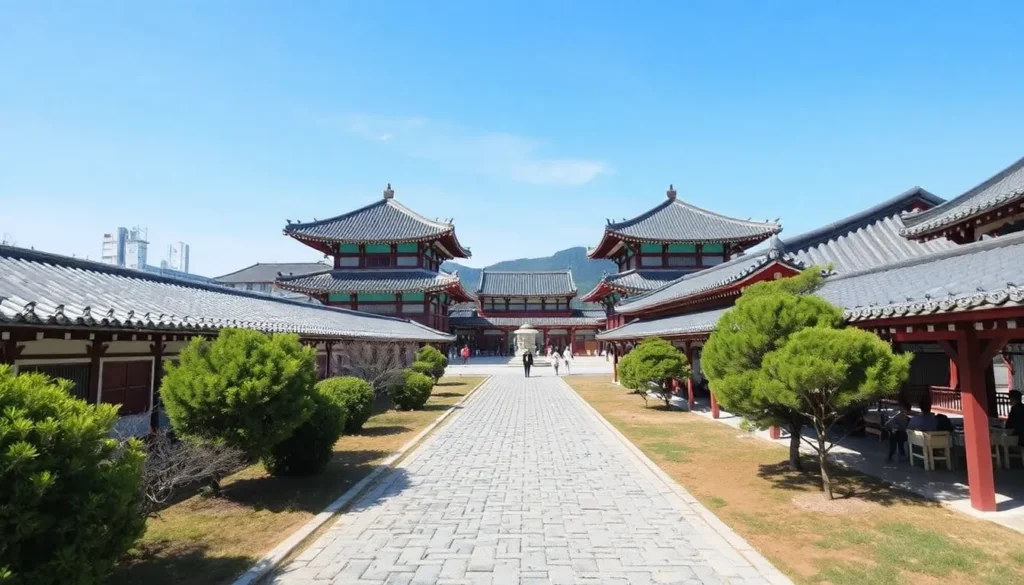
- Exploring South Korea: A Three-Stage Journey
- How to Get Around in South Korea
- Days 1-4: Discovering Seoul
- Days 5-6: Exploring Jeonju
- Day 7: A Day in Daegu
- Day 8: A Peaceful Retreat at Haeinsa Temple
- Days 9-10: The Historical Wonders of Gyeongju
- Days 11-13: Discovering Busan
- Days 14-17: Island Life in Jeju
- Days 18-21: Wrapping Up in Seoul
- Alternative Route Suggestions
- Two-Week Route in South Korea
- Ten Days in South Korea
- Map of the Best Itinerary in South Korea
Are you planning a trip to South Korea but unsure about the best route to take? Wondering how many days are recommended for traveling through this beautiful country? If you already have your flights booked and need help crafting the perfect itinerary, you're in the right place! In this article, we’ll delve into an ideal three-week itinerary in South Korea, which allowed us to explore the must-see highlights on our first journey to this fascinating Asian nation.
South Korea is truly a hidden gem, and what's even more astonishing is that it's not yet overcrowded with tourists, especially outside of Seoul. During our travels, we often found ourselves as one of the few foreign faces in many places, even in well-known cities and attractions.
Thus, we can confidently say that now is the perfect time to visit South Korea. The country offers a rich tapestry of cultural, historical, culinary, and natural beauty without the crowds that you might experience in other popular destinations.
Ready to discover the best travel route in South Korea? Let’s get started!
Exploring South Korea: A Three-Stage Journey
Our adventure began and ended in Seoul, and we can break our trip into three distinct stages. The first stage was dedicated entirely to the capital city, where we spent just over a week, including the days at the beginning and end of our journey. The second stage involved traveling across the Korean Peninsula using public transportation (buses and trains) until we reached Busan. Finally, the third stage took us to Jeju Island, where we rented a car to explore freely, offering a unique and exotic perspective of the country.
Below, you’ll find a map summarizing our three-week journey in South Korea, but further down, you can also check out an interactive Google Maps version of all the stages to help you plan your own itinerary!
How to Get Around in South Korea
Traveling within South Korea is both easy and efficient. For our journey across the peninsula, we utilized both buses (the Express buses for major routes and Intercity buses for less popular ones) and trains (managed by two companies: the public Korail and the private SR). Both modes of transport are affordable, and purchasing or reserving tickets is straightforward.
If you're planning a long journey, such as from Seoul to Busan, or considering a few days on Jeju Island, you'll find numerous Korean airlines offering competitive prices and a variety of flight times.
⭐ Check out our transportation guide for South Korea for more information.
Now, let’s present our detailed itinerary for three weeks in South Korea, day by day:
Days 1-4: Discovering Seoul
We kicked off our three-week adventure in the vibrant capital of South Korea. Having previously visited Seoul in 2020 before the pandemic, Lety was eager to explore the city again with Rober, and it did not disappoint!
Arriving at the international airport on a flight from Spain, we spent our first four days immersing ourselves in various neighborhoods, visiting iconic locations from Korean dramas, and indulging in the rich and diverse cuisine. We planned to return to Seoul at the end of our trip for a couple of excursions and to bid farewell to this enchanting country.
Seoul is a bustling city filled with neon lights, restaurants, bustling street markets, and a mix of traditional palaces surrounded by modern skyscrapers. Here, the past seamlessly intertwines with a rapid evolution into modernity.
From the majestic Gyeongbokgung Palace to the bustling shops of Myeongdong, and from the trendy student district of Hongdae to reflecting on recent history at the Korean War Museum, there's no shortage of activities to keep boredom at bay.
- Everything to see and do in Seoul
- We stayed at the Philstay Myeongdong in the Myeongdong district
Days 5-6: Exploring Jeonju
We hopped on a bus from the Express Bus Terminal (located in the Shinsegae shopping mall), which took us in about three hours to Jeonju, a town renowned for housing one of the largest and most beautiful hanok villages in South Korea.
Jeonju turned out to be one of our favorite stops during our journey. Its cobblestone streets, dotted with traditional houses featuring curved roofs and wooden doors, transported us to a charming past era. We were also delighted by the street food stalls offering delicious Korean treats, like octopus with cheese!
In Jeonju, life seems to move at a different pace. The vibrant K-Pop rhythms give way to traditional music, and the streets are filled with couples dressed in hanboks, the traditional Korean attire. Here, fried chicken and barbecues take a back seat to steaming bibimbap, a traditional dish originating from this area that you must absolutely try.
- The best sights and activities in Jeonju
- We stayed at the Beautiful House, a traditional-style accommodation in the heart of the city
Day 7: A Day in Daegu
We marked the end of our first week in South Korea by boarding another bus that took us three hours to Daegu, the fourth most populous city in the country. To be completely honest, it didn’t wow us. In many ways, it felt like a smaller version of Seoul but lacked its vibrant personality and iconic attractions.
Daegu’s charm lies in its status as a university city, bringing a laid-back, trendy vibe typical of many Asian cities of this nature. The gastronomic offerings are vast and excellent, catering to every taste and budget.
Additionally, there’s a traditional market worth visiting, an interesting Oriental Medicine Museum, several churches, and a rather peculiar shopping mall that features an amusement park on the top floor for those who dare!
However, the main reason we included Daegu in our itinerary was to access the buses leading to a much more fascinating destination: the Haeinsa Temple, where we could experience the temple stay.
- Must-do plans in Daegu
- We stayed at the Insomnia Hotel, which was located in the shopping district and offered great value
Day 8: A Peaceful Retreat at Haeinsa Temple
Have you heard of the Temple Stay? This program allows both locals and tourists to spend a night (or more) in a Korean Buddhist temple. There are many temples across the country, and after careful consideration, we chose to immerse ourselves in this experience at the beautiful Haeinsa Temple, and we couldn’t have made a better choice!
Set in the idyllic natural surroundings of Gayasan National Park, surrounded by trees and streams, Haeinsa Temple is steeped in deep history and UNESCO recognition (it is home to the Korean Tripitaka). This location is a must-visit on any South Korea itinerary. We spent an unforgettable day and night there, enjoying serene walks, monk ceremonies, and total relaxation.
What makes this place even more remarkable is its beautiful wooden library. Imagine 80,000 wooden blocks, each intricately carved with ancient Buddhist texts, meticulously preserved over the centuries. This collection, known as the Korean Tripitaka, is a hidden treasure within the temple. It’s not only the most comprehensive collection of Buddhist texts in the world but also a testament to the dedication and wisdom that has been safeguarded here for millennia.
To reach Haeinsa, there are daily Intercity buses departing from the Seobu Bus Terminal (west of Daegu) and also from the city of Goryeong.
Days 9-10: The Historical Wonders of Gyeongju
After breakfast (served at 4:30 am!), we took our last walks in the National Park, gathered our belongings, and returned to the Daegu-Seobu station to catch an express bus to Gyeongju, a city that was once the imperial capital.
This leg of our itinerary surprised us the most. Gyeongju is often referred to as a museum without walls, known for its tumuli. At first glance, these perfectly rounded hills appear to be mere mounds, but they actually conceal ancient imperial tombs! There are countless tumuli scattered throughout the city and its surrounding areas, and it seems that every corner holds a story waiting to be told.
Moreover, Gyeongju is home to a wealth of historical buildings, including the Cheomsongdae Observatory, vibrant bridges, palaces surrounding crystal-clear ponds, museums to learn more about Korea’s history, and a quaint traditional neighborhood filled with restaurants serving local culinary delights (oh, those barbecues!).
In short, Gyeongju is an essential stop on any itinerary through South Korea.
- Everything to see and do in Gyeongju
- We stayed at the Mini Hotel 141, which was far from tiny 🙂
Days 11-13: Discovering Busan
Wrapping up this segment of our journey, we finally hopped on a train to our last destination: Busan. To do so, we first traveled to the Singyeongju Station (the Gyeongju train station is closed) that connects with the country's major rail lines. The ride from here to Busan takes just about 35 minutes on the express train.
We arrived in South Korea's second-largest city, which, while interesting and full of options, didn’t captivate us quite like Seoul. Perhaps it was the substantial distances that required us to spend hours on buses, or maybe it was the lack of a striking personality that made it feel less enchanting. However, Busan does offer something that Seoul can’t: the coast! This makes it a popular destination for enjoying its beaches during the summer and well-known for its seafood.
One of the unmissable experiences in Busan is visiting the Jagalchi Market, a haven for seafood lovers where you can pick your fresh seafood and have it cooked on-site. Other notable attractions in the city include the Gamcheon Culture Village, the Busan Tower, the island of Yeongdo, and its nearby beaches and temples.
- Must-visit spots and activities in Busan
- We stayed at the NO25 Hotel in the Nampo-dong area
Days 14-17: Island Life in Jeju
We flew from Busan to Jeju Island, one of the most anticipated stops on our journey, and it did not disappoint! Known as the Hawaii of South Korea, Jeju greeted us with stunning waterfalls, cute modern cafes, tea fields, volcanoes, lush forests, temples, and beaches.
The island also reflects the ancient culture of the Jeju elders, with protective statues dotting the landscape and the hanyeo, the female divers who symbolize resilience and have gained UNESCO recognition.
Jeju radiates the special energy that only volcanic islands possess. Even though it is far from the pristine paradise it once was, it still maintains a natural charm that personally enchanted us. We wouldn't mind returning for an extended stay!
During our four nights here, we rented a car for the freedom to explore the island at our own pace. On our return, we flew back to Seoul to wrap up our Korean adventure.
- Everything to see and do in Jeju
- Advice for visiting Jeju Island
- We spent two nights at the Jeju Aurum in the south and another two nights at the B&Sun Pension near Seongsan Ilchulbong
Days 18-21: Wrapping Up in Seoul
To conclude our three-week itinerary in South Korea, we dedicated another four days to Seoul. Being a city that is practically inexhaustible in terms of attractions, our aim during these final days was to revisit all the places we missed during our first visit, explore some outlying neighborhoods such as Gangnam (where we stayed), and undertake a few nearby excursions.
We spent one day visiting the Demilitarized Zone (DMZ) at the border between the two Koreas, which, while a bit touristy, is incredibly interesting. We also visited the Hwaseong Fortress, one of the best-preserved and largest fortresses in the country. Oh, and we nearly forgot to mention that on our final day, we became experts in the noble art of Korean skincare and stocked up on beauty products!
- We spent these final nights at the Hotel Senne in the Gangnam area
Alternative Route Suggestions
While we've outlined a typical route to cover South Korea's must-see highlights, following recommendations from Lonely Planet, we considered an alternative itinerary that would take us to explore the eastern part of the country.
This route would start in Seoul and travel to Sokcho (possibly with a stop in Chincheon) to explore the Seoraksan National Park, renowned for its stunning landscapes. From there, we would follow the coast southward, passing through Gangneung with its historical remnants from the Joseon dynasty, the Hwanseongul Cave, and the beautiful coast of Samcheok. We would then journey inland to visit the traditional village of Hahoe, stopping by Andong. Ultimately, we would arrive in Gyeongju and continue with the main itinerary.
Don't forget to get a Revolut card (with a €10 promo) to avoid commissions when paying and withdrawing money abroad.
Two-Week Route in South Korea
Short on time? No worries! Here’s a streamlined itinerary for 15 days in South Korea:
- Days 1-4: Seoul
- Day 5: Jeonju
- Days 6-7: Gyeongju
- Days 8-9: Busan
- Days 10-14: Jeju
- Day 15: Seoul
Ten Days in South Korea
Only have ten days? We suggest two plans:
- Option 1: Seoul + Jeju
- Option 2: Seoul + Gyeongju + Busan
Personally, we would opt for the first plan, provided it’s a good season to visit Jeju Island. We believe that Seoul and Jeju are the best parts of Korea, at least among what we explored, so we wouldn’t miss the chance to experience both!
Map of the Best Itinerary in South Korea
For a visual aid, we’ve created a map in Google Maps that provides a clearer idea of the itinerary for travel in South Korea and its suggested variations:
Until now, this has been our two-to-three-week itinerary in South Korea. We hope you find it helpful and that soon you can experience the wonders this country has to offer firsthand. We believe this route is perfect for a first trip to South Korea, but of course, feel free to modify it according to your preferences. Have you been there? Did we miss any must-see places? We have no doubt we will return in the future; this country felt like a treasure that is still undiscovered by many, and we’re sure there are beautiful areas waiting for us to explore.
Follow our day-to-day journey in South Korea on our Instagram stories.
| Save on your trip |
| Compare and find cheap flights here |
| Find accommodation at the best prices here |
| Book activities and excursions in Spanish here |
| Get a 5% discount on your IATI travel insurance here |
| Book airport transfers here |
| Learn how to withdraw money without fees here |
| Get a 5% discount on your eSIM from Holafly here |
| Rent a car with the best deals here |
| The best books and travel guides here |
| Check out all our articles about South Korea |
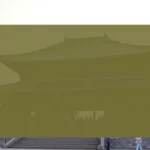
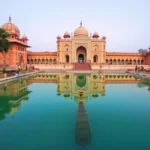

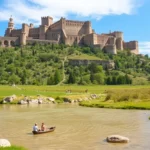
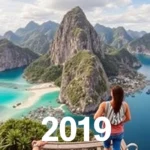
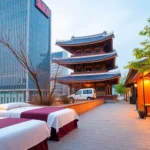
Deja una respuesta